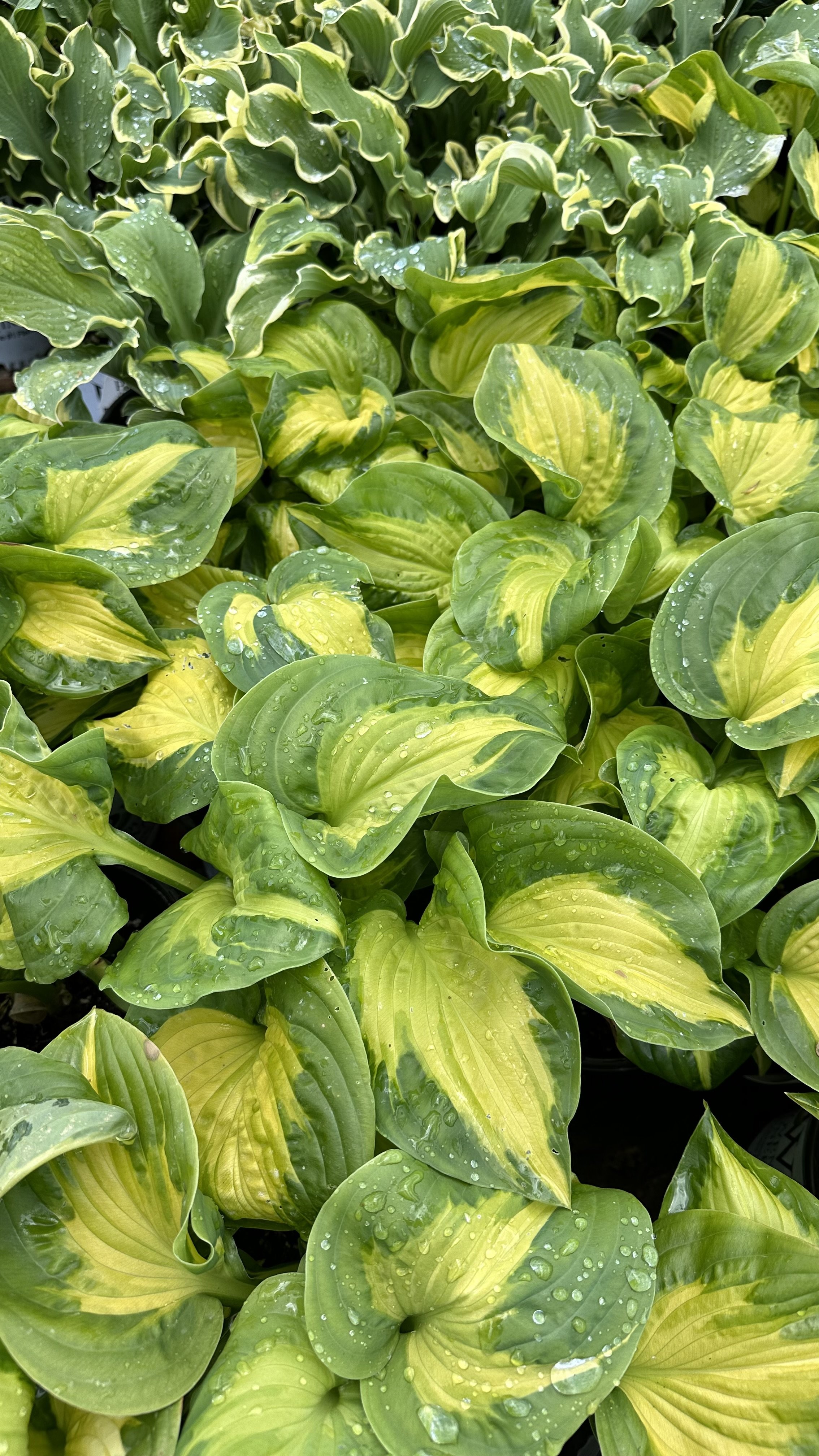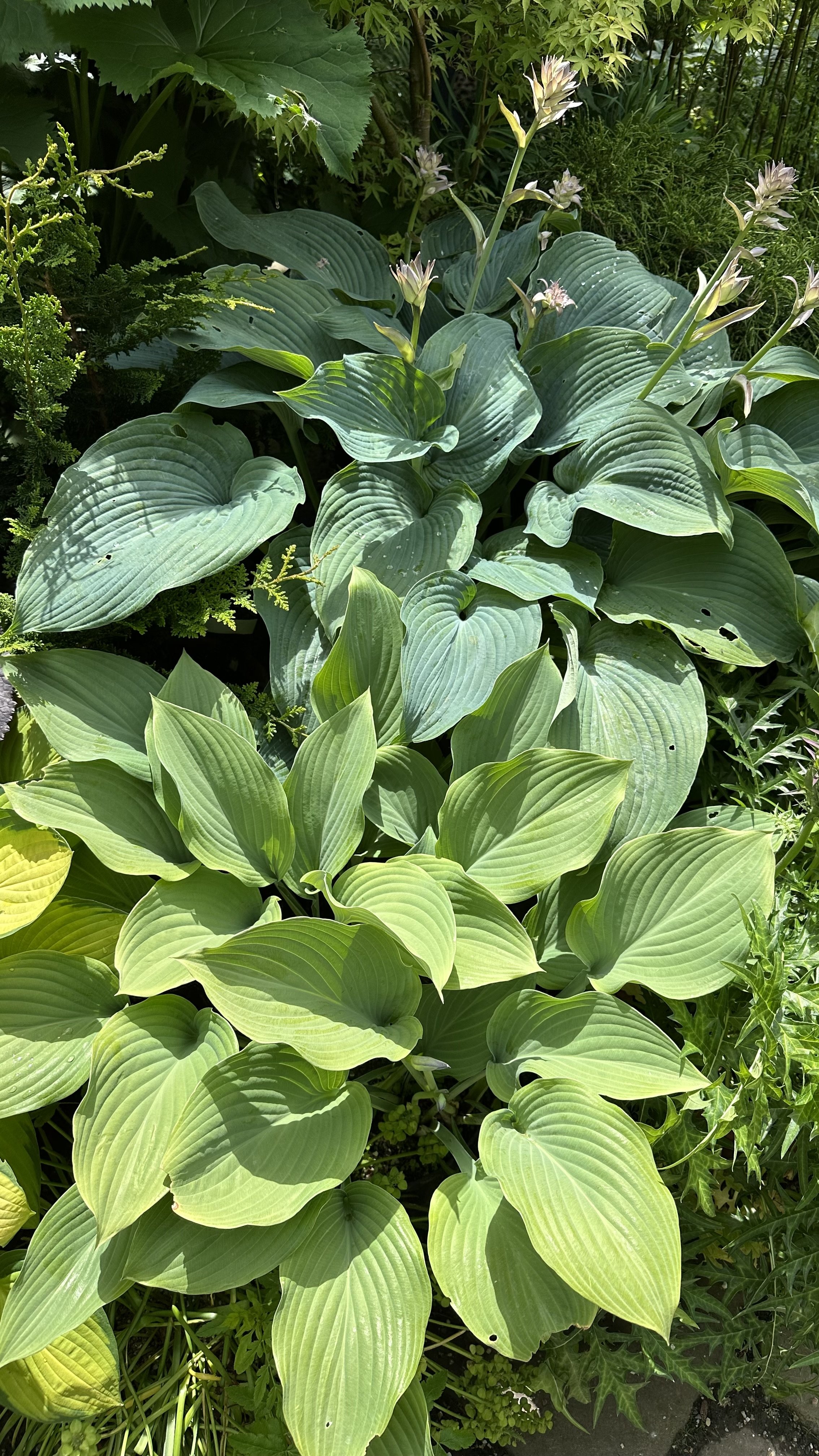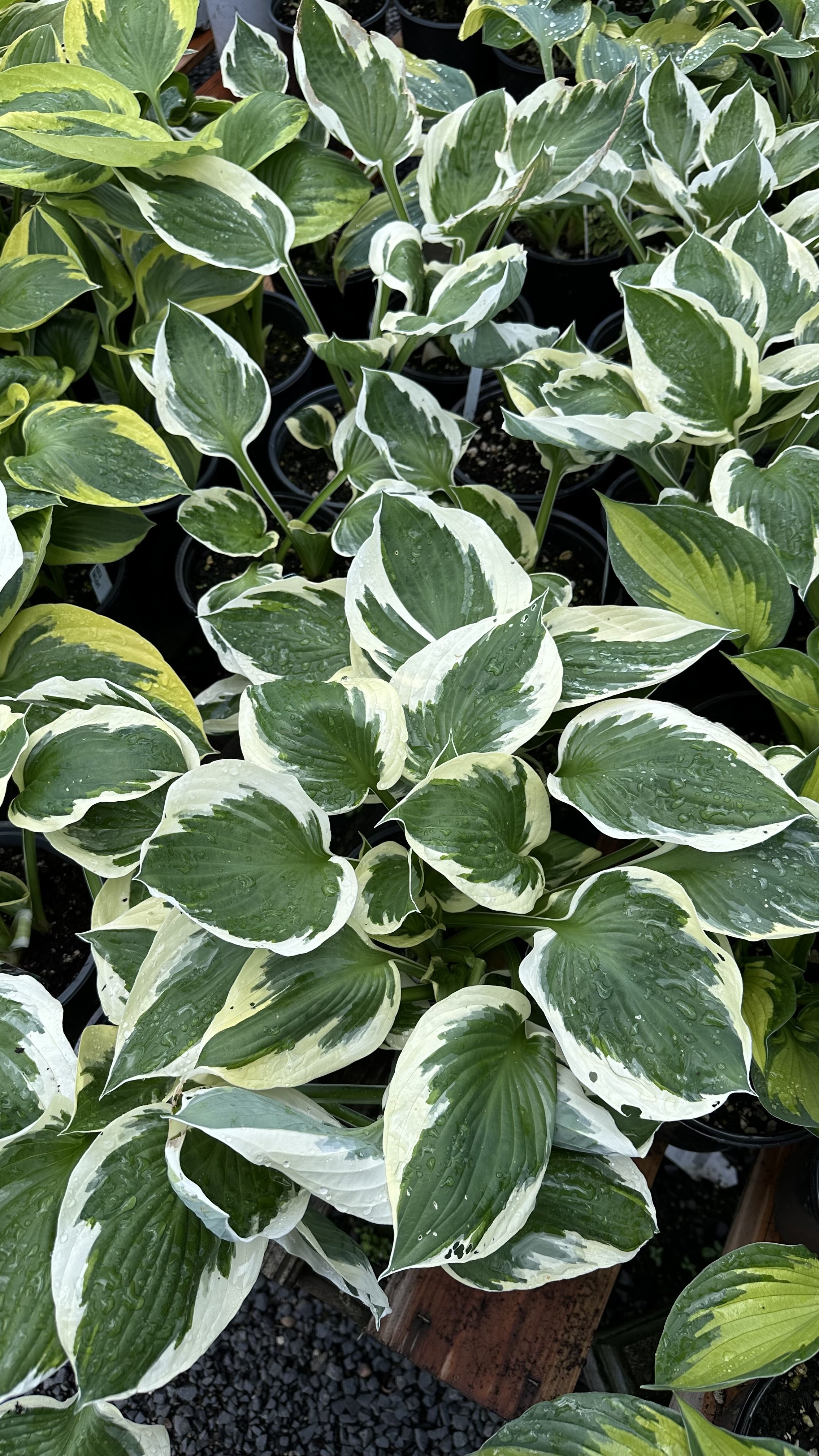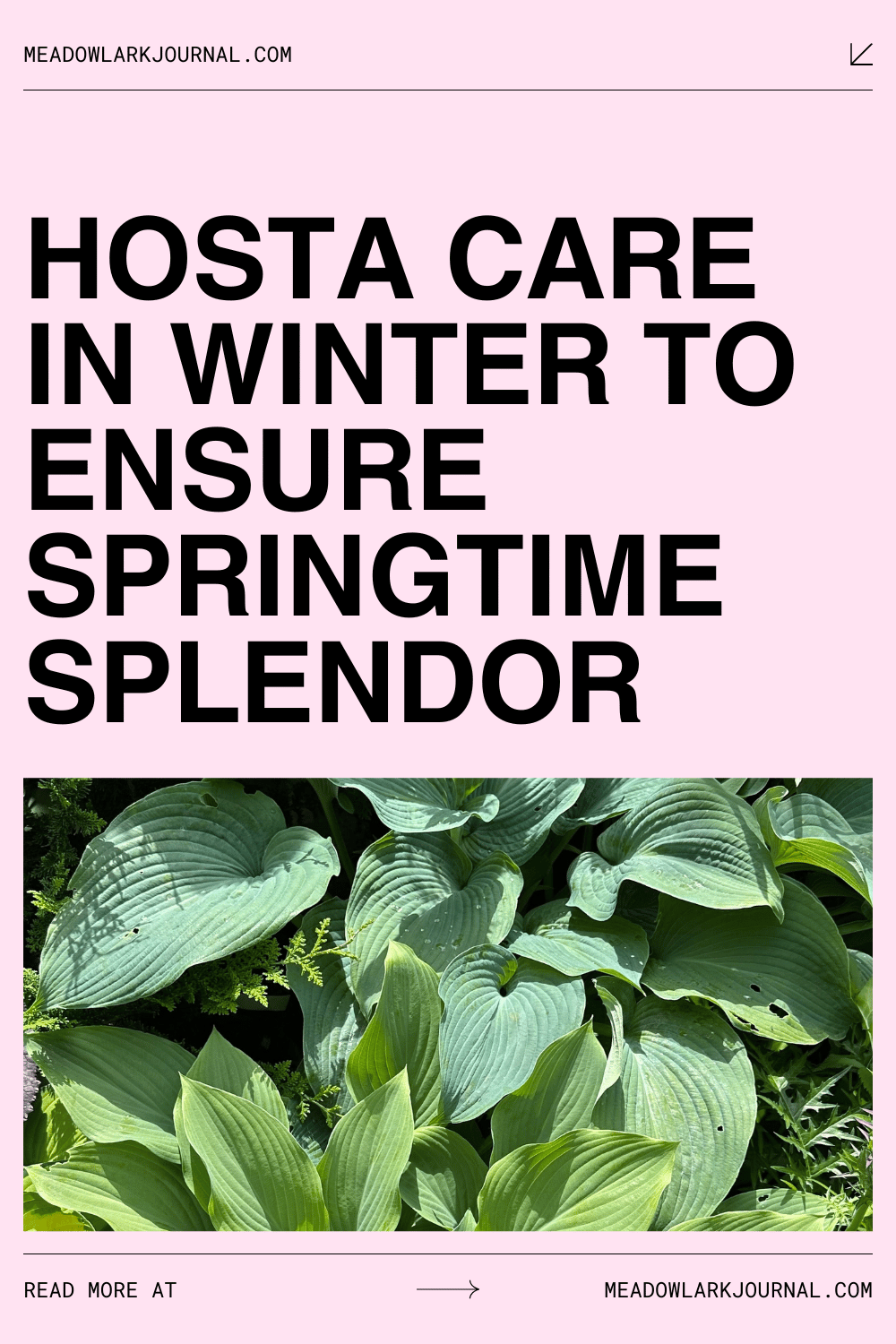Hosta Care in Winter to Ensure Springtime Splendor
This website is reader-supported - thank you! This post may contain affiliate links. As an Amazon Associate, I earn from qualifying purchases at no extra cost to you.
As the chill of winter begins to set in, we start to turn our attention to the care of our beloved hosta plants.
Renowned for their lush foliage in the garden, hostas require specific attention during the colder months to ensure they emerge in top condition come spring.
Winter can be a challenging time for these plants, but with the right knowledge and techniques, you can master the art of hosta winter care.
This guide is dedicated to helping you maintain your hostas throughout the winter so that they are ready to unfurl their new leaves and display their full glory as the warmer days of spring arrive.
Here we'll cover everything from the basics of understanding hostas in their winter state to detailed steps on preparing them for the cold.
Understanding Hostas in Winter
Hostas undergo significant changes as winter approaches.
Here's a deeper look into what happens to hostas during the colder months and why these changes are crucial for their lifecycle.
Entering Dormancy: A Natural Process
Dormancy Explained:
As daylight decreases and temperatures drop, hostas naturally enter a state of dormancy.
This is a survival mechanism where their above-ground foliage dies back, and the plant's energy is conserved in the roots.
The Look of Dormancy:
During this period, the once vibrant leaves turn yellow and wilt, eventually becoming brown and dry.
It's important to recognize this as a normal, healthy process, not a sign of a dying plant.
How Winter Affects Hostas
Soil and Root Protection:
The roots remain alive and are protected by the surrounding soil.
However, in regions with harsh winters, the ground can freeze to a depth that may affect the roots.
This is where proper winter preparation, like mulching, plays a key role.
Impact of Snow and Frost:
In some climates, a blanket of snow can actually benefit hostas by providing insulation against extreme cold.
However, repeated freezing and thawing can be harmful, causing the soil to heave and potentially damage the roots.
Hosta Varieties and Winter Hardiness
Varietal Differences:
Different hosta varieties have varying levels of winter hardiness.
Some, like the robust 'Night Before Christmas', are bred to withstand colder temperatures, while others might be more sensitive.
Acclimatization:
Hostas generally acclimatize to their growing conditions.
Over time, they adapt to the specific winter conditions of their environment, which helps them survive and thrive year after year.
Preparing for Spring
Energy Conservation for Spring:
The dormancy period is essential as it allows hostas to conserve energy, which they will use in spring to produce new, vibrant leaves.
This cycle of dormancy and growth is what keeps hostas healthy and helps them to grow larger and more beautiful each year.
Anticipating New Growth:
As winter ends, the soil begins to warm, signaling the hostas to end their dormancy.
The first signs of life in spring are a welcome sight for gardeners, as tiny shoots emerge, promising a new season of lush foliage.
For more shade garden tips, check out my guides:
Preparing Hostas for Winter
Ensuring your hostas are ready to face the winter is key to their health in the following growing season.
Here’s a more in-depth look at the steps to take:
1. Tidying Up: Removing Dead Foliage
Timing:
Start preparing your hostas for winter after the first few frosts, when the leaves start to yellow.
Process:
Gently remove the dead and yellowing leaves.
This not only cleans up your garden but also reduces the risk of fungal diseases and pest infestations, which can thrive on decaying plant matter.
2. Mulching: The Shield Against Cold
Choosing Mulch:
Opt for organic mulches like shredded bark, straw, or leaf mold.
These materials not only insulate the soil but also enrich it as they decompose.
Application:
Apply a thick layer of mulch around the base of each hosta, extending a few inches out from the center of the plant.
This helps maintain a consistent soil temperature, prevents heaving, and retains moisture.
Here is the mulch I recommend:
3. Watering Before the Freeze
Hydration:
Ensure your hostas are well-watered before the ground freezes.
Well-hydrated soil can protect roots better in cold conditions than dry soil.
Watering your hostas is a great way to use rainwater collected in a water butt.
To learn more about this check out my guide Water Butts: Sustainable Water Storage for Your Garden.
Avoiding Overwatering:
While hydration is important, be careful not to overwater, as this can lead to root rot.
The goal is to maintain moist, not soggy, soil.
4. Overwintering Potted Hostas
Relocation:
If possible, move potted hostas to a sheltered area like a garage or shed.
This protects them from harsh winds and severe temperatures.
Insulation:
Wrap the pots with a plant cover to provide extra insulation.
This is especially important for ceramic or terracotta pots, which can crack in freezing temperatures.
Here is the plant cover I recommend:
5. Special Considerations for Different Hosta Varieties
Hardy Varieties:
Some hostas are more winter-hardy than others.
For these, basic cleanup and mulching may be sufficient.
Sensitive Varieties:
For more delicate varieties, consider extra mulch or even a temporary cover during extreme cold snaps.
6. Slugs and Pest Control
Preventive Measures:
Fall is also a good time to address slugs and other pests that can be problematic for hostas.
Use natural deterrents like crushed eggshells around your plants.
Learn more with my guide: Top Slug Resistant Plants to Transform Your Garden.
For more shade garden tips, check out my guides:
Indoor and Potted Hosta Winter Care
Caring for hostas indoors and in pots during winter requires a slightly different approach compared to those planted in the ground.
Here’s a detailed guide:
1. Choosing the Right Location
Cool and Frost-Free:
Find a spot that is cool but protected from frost, such as an unheated garage, basement, or greenhouse.
Light Requirements:
While hostas are dormant and don’t require much light, a location with some natural light is beneficial.
Avoid placing them in total darkness.
2. Watering Requirements
Reduced Watering:
During dormancy, hostas require much less water.
Water them sparingly, just enough to prevent the soil from completely drying out.
For more watering tips, check out my guide How to Use Watering Globes.
Monitoring Moisture Levels:
Check the soil moisture periodically.
The goal is to keep the soil slightly moist but not wet, as excessive moisture can lead to root rot.
3. Temperature Management
Ideal Temperatures:
Aim to keep the temperature consistently cool, ideally between 35-50°F (1.7-10°C).
This temperature range helps maintain dormancy without risking frost damage.
Avoiding Fluctuations:
Sudden temperature changes can be harmful.
Ensure that your hostas are not exposed to warm temperatures, which could prematurely end their dormancy.
4. Pot and Soil Care
Insulating Pots:
If the pots are outdoors, consider insulating them with bubble wrap or burlap.
This helps protect the roots from extreme cold.
Drainage:
Ensure that pots have good drainage to prevent water accumulation at the bottom, which can be detrimental during the cold months.
5. Monitoring for Pests and Diseases
Regular Checks:
Even in dormancy, it’s important to periodically check your hostas for signs of pests or diseases.
Early detection can prevent bigger problems in the spring.
Pest Control:
If you notice signs of pests, use appropriate measures to control them.
This could include removing them by hand.
6. Preparing for Spring
Gradual Transition:
As winter ends, gradually reintroduce your potted hostas to the outdoors if they were kept inside.
This helps them acclimate to the changing conditions without shock.
Increasing Watering:
As the temperatures rise, slowly increase watering to support new growth in the spring.
For more shade garden inspiration, check out my guide:
Looking Ahead: Spring Care for Hostas
As winter recedes, it's time to focus on spring care for your hostas.
This critical period sets the stage for healthy growth and stunning displays throughout the growing season.
1. Assessing Winter Impact
Initial Inspection:
As the snow melts and temperatures rise, start by assessing the impact of winter on your hostas.
Look for any signs of damage or disease that might have occurred during the colder months.
Soil Condition:
Check the soil around your hostas.
Winter weather can compact soil, so loosening it gently can improve aeration and drainage.
2. Watering and Feeding
Increasing Water Gradually:
As the ground thaws, begin to slowly increase watering.
Hostas emerging from dormancy will need more water, but be cautious of overwatering which can lead to root rot.
Balanced Fertilization:
Apply a balanced, slow-release fertilizer as new growth appears.
This will provide the necessary nutrients for the hostas to flourish.
Avoid high-nitrogen fertilizers, which can encourage lush foliage at the expense of the root system.
Here is the fertilizer I recommend:
3. Mulching and Soil Health
Refreshing Mulch:
Replace or refresh the mulch around your hostas.
Mulch helps in retaining soil moisture, regulating temperature, and suppressing weeds.
Organic mulch will also break down over time, adding nutrients to the soil.
Soil Enrichment:
Enrich the soil with compost or organic matter.
This step improves soil structure, provides nutrients, and enhances overall plant health.
4. Managing Pests and Diseases
Pest Surveillance:
Keep an eye out for common hosta pests like slugs and snails, especially as the weather warms.
Disease Prevention:
Check for any signs of fungal diseases or rot, particularly if the winter was wetter than usual.
Remove any affected parts and consider using appropriate fungicides if necessary.
5. Pruning and Cleaning
Dead Leaf Removal:
Clean up any leftover foliage from the previous year.
This not only makes your garden look tidy but also prevents the harboring of pests and diseases.
Pruning for Health:
If you notice any damaged or diseased leaves, prune them to encourage healthy new growth.
6. Dividing Overgrown Hostas
When to Divide:
If your hostas have grown too large or are crowding each other, early spring is the ideal time to divide them.
This ensures the plants have a full season to establish themselves in their new location.
Technique:
Carefully lift the hosta clump and divide it into smaller sections, each with a portion of roots and shoots.
Replant these divisions at the same depth they were originally growing.
7. Preparing for the Growing Season
Staking Taller Varieties:
For taller hosta varieties, consider staking them early to support their growth and prevent wind damage.
Planning for Growth:
Anticipate the size your hostas will reach at maturity and ensure they have enough space.
This foresight prevents overcrowding and promotes better air circulation, reducing the risk of disease.
For more plants that are perfect for shade gardens, check out my guide:
FAQs
When do hostas come back after winter?
Hostas typically start to show new growth in early spring, once the temperatures begin to rise consistently.
What do hostas look like in winter?
During winter, hostas may look lifeless as their leaves die back and the plant enters dormancy.
This is normal and not a cause for concern.
Do hostas die in winter?
No, hostas don't die in winter.
They enter a dormant state and lose their leaves, but they will regrow in the spring.
How should I care for my hosta 'Winter Snow' during colder months?
'Winter Snow', like other hosta varieties, requires dead leaf removal, potential mulching, and reduced watering during winter.
Is there a need to cut back hostas in fall?
Yes, cutting back hostas in fall by removing dead leaves can help prevent disease and pest problems.
Pin this post to save it for later!





































